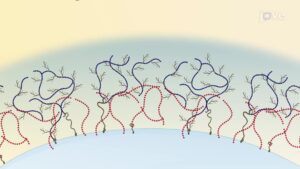Tesamorelin: A Safer Path to Higher Growth Hormone
Synthetic growth hormone (GH) injections promise rapid muscle gain and fat loss, yet high cost, strict FDA rules and tumour-growth concerns keep many athletes and patients away. Tesamorelin—a 44-amino-acid peptide that stimulates the pituitary to release more of your own GH—offers a regulated, evidence-backed alternative. This guide explains how tesamorelin works, who benefits most, ideal dosing windows and the clinical checkpoints that keep therapy safe.
1. How Tesamorelin Works
The peptide mimics growth-hormone–releasing hormone (GHRH). When injected subcutaneously it binds pituitary receptors, raising natural GH and, downstream, insulin-like growth factor-1 (IGF-1). Unlike direct recombinant GH, endogenous pulses remain physiologic, reducing risk of acromegaly-type side-effects.
FDA-Approved Indication
In 2010 the U.S. Food & Drug Administration approved tesamorelin (brand name Egrifta®) to treat HIV-associated lipodystrophy—specifically excess visceral abdominal fat that elevates diabetes and cardiovascular risk.
2. Documented Benefits Beyond HIV Care
- Visceral-fat reduction: 15–20 % drop in intra-abdominal fat after 26 weeks in clinical trials.
- IGF-1 rise: Average +170 µg · L-1, bringing middle-aged adults back to youthful reference ranges.
- Workout endurance: Users report longer sets before fatigue and improved high-intensity interval capacity—likely from higher glycogen turnover.
- Sleep quality: GH pulses trigger melatonin release, deepening slow-wave sleep and next-day recovery.
- Liver health: Small studies show reduced hepatic fat and normalised ALT/AST in non-alcoholic fatty-liver disease.
- Cognitive support: Early data suggest improved memory in adults with mild cognitive impairment, although larger trials are pending.
3. Dosing & Timing Essentials
| Parameter | Recommendation |
|---|---|
| Typical dose | 1 mg subcutaneous, once nightly |
| Timing | 90 min after last meal & 90 min before sleep Rationale: GH release peaks during early-night deep sleep and is blunted by post-prandial insulin. |
| Cycle length | 12–24 weeks, followed by 4–8-week break for reassessment |
| Storage | Reconstituted vials 2–8 °C; discard after 21 days |
4. Safety Screen Before Starting
Tesamorelin is generally well-tolerated; injection-site redness is the most common complaint. However, therapy should be avoided or paused in the following situations:
- Known or suspected malignancy—GH can accelerate tumour growth.
- Pregnancy or breastfeeding (lack of safety data).
- Active proliferative diabetic retinopathy.
- Uncontrolled sleep apnoea (GH can transiently increase airway soft-tissue volume).
Baseline & Monitoring Labs
- IGF-1 (baseline, week 8, week 16)
- Fasting glucose & HbA1c (rule out worsening insulin resistance)
- Comprehensive metabolic panel (focus on ALT/AST)
- Optional: Ultrasensitive CRP for systemic inflammation changes
5. Tesamorelin vs. Other Peptide Options
CJC-1295 + Ipamorelin: Popular two-peptide stack. CJC half-life ≈ 30 min; ipamorelin ≈ 2 h. Users inject 2–3× daily or combine CJC with DAC (drug-affinity complex) to extend half-life to five days. Tesamorelin’s intrinsic 2-hour half-life, plus stronger pituitary affinity, often produces higher single-dose IGF-1 gains without stacking.
6. Practical Tips for First-Time Users
- Rotate abdominal injection sites to minimise irritation.
- Pair with 25 g casein or whey isolate 30 min post-injection if late-night hunger disrupts sleep.
- Avoid simple carbs within two hours of dosing—insulin blunts GH pulses.
- Track resting heart-rate variability and workout performance; many users notice endurance improvements by week 3.
Quick FAQ
Is tesamorelin legal for athletes?
No. The World Anti-Doping Agency (WADA) lists all GH secretagogues, including tesamorelin, on its prohibited substances list.
Will it raise blood pressure?
Clinical trials show neutral effects on blood pressure, but indirect fluid retention can occur at very high doses.
Disclaimer: This content is for educational use and does not replace personalised medical advice. Always consult a qualified clinician before starting peptide therapy.
Video Summary
For more research-based hormone and fitness insights, subscribe to our channel:
https://www.youtube.com/@Vitality-and-Wellness
Looking for customised nutrition or peptide guidance? Explore Parkway Athletic Club’s Nutrition Program for one-on-one support.



